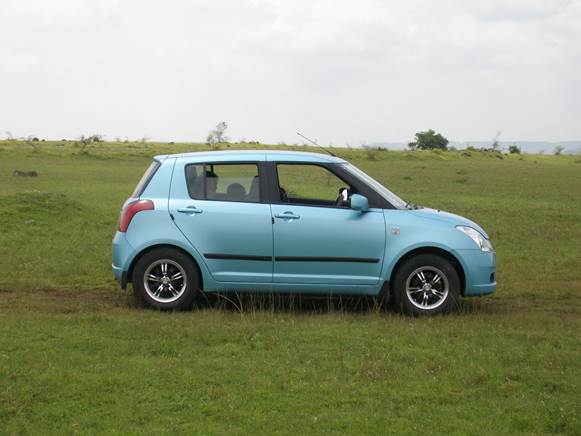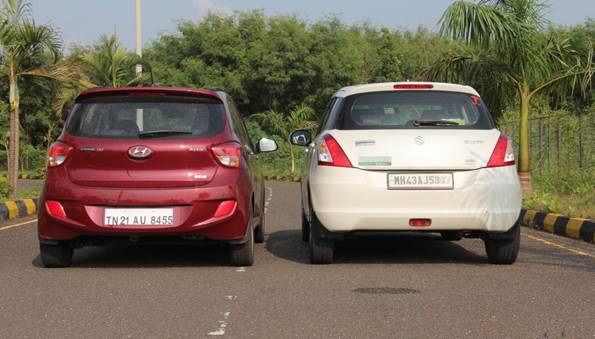Performance
This is where it gets interesting. The Swift offers a four-cylinder, 1.3-liter DDiS diesel engine borrowed from FIAT, with 75 PS of power and 190 Nm of torque. The Grand i10, on the other hand, uses a second-generation U2 three-cylinder 1.1-liter CRDi diesel engine. It makes 71 PS and 160 Nm. Now 1,120 cc versus 1,248 cc may not seem like much of a difference, but when you consider the difference in the number of cylinders and the rev ranges where they really start to bubble, things are quite different. The Swift needs to be revved up beyond 1,800rpm or higher before the torque finally starts to come in. that’s because the fixed geometry turbo needs a bit of stick to start whistling here and brings the inherent lag. The steering wheel feels large, while the gear shift is not the smoothest either; not helping the need to mostly stay in the second gear while driving in the city.

In the Grand i10, although the three-cylinder motor thrums like an industrial unit on idle in quiet surroundings, it’s smooth on the move and that 160 Nm of torque steps in early, with hefty batches available even before the 1,500 peak band steps in. however, the boost really steps up when past 1,600rpm, and it is relentless on its way to the 4,000-rpm mark, where peak power comes in. this, coupled with its planted feel and well-sorted suspension, makes it a breeze to drive on the highway, while city runs are just as easy with the possibility of using the second, third and even the fourth gear.
The top speed for the Swift is an indicated 165km/h while the Grand i10, believe it or not, headed north of 165km/h on the speedometer too. True speeds, as indicated by our test equipment, show that the Swift managed 160km/h, while the Grand i10 was just shy of the 150km/h mark. But the stability of the package is what matters and the Grand i10 can stay on song between 120km/h and 140km/h for most part and that ensures that there are no complaints from either the car or the driver about the way things are handled.

Both cars use five-speed manual transmissions which drive the front wheels, but the ratios are different. One thing about the Grand i10 is that the ratios for second and third seem better for highway driving or taking corners at speed. Another point to note is that the lift-for-reverse takes a bit of getting used to at first. That apart, the car takes little more to become as easy to use as an extension of your hands. The Swift, too, is a very likeable car and its exciting design and engaging road manners make it a fun choice.

Hard numbers
Many of our readers are surely wondering how much economy these hatches bring to the table for the asking price. Yes, they balance fun and practicality, but fuel economy is a different story. The Swift ZDi manages 18,3km/l in the city and 23km/l on the highway, with an overall 19,5km/l. Those numbers for the Grand i10 are 16km/l and 21km/l, city and highway respectively, which means the overall figure works out to 17,25km/l. driven easier, though, we believe they can eke out even more.
Both the models we tested here are top-end diesels. The Swift ZDi costs $13,118, while the Grand i10 CRDi Asta costs $12,264. For reference, the range starts from $8,509 for the Swift, and from $8,138 for the Grand i10.
Verdict
The Swift has been around for a while now and though the Grand i10 is the new kid on the block, it can stand its ground with the big names too, as an overall package, comprising handling dynamic, seating comfort and engine feel, the Grand i10 CRDi Asta gets the all-important vote of trust.
SpecificationsHyundai Grand i10 CRDi Asta Price: $12,265 Engine: 3-cyl, 1,120cc, 71 PS, 160 Nm Transmission: Five-speed, manual Top speed: 148.2km/l Fuel economy: 17.25km/l Maruti Swift ZDi Price: $13,119 Engine: 40cyl, 1,248cc, 75 PS, 190 Nm Transmission: Five-speed, manual Top speed: 160.0km/l Fuel economy: 19.5km/l |